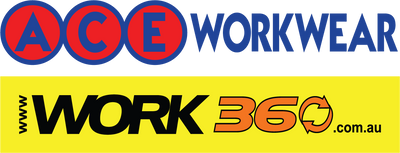Eyes are one of the most vulnerable parts of the body and are very susceptible to irritation and injury. Whether the offending substance is a solid, gas or liquid, the resulting pain and vision loss is never welcome. You can lower your risk of problems by wearing eye protection, and if you have employees, you want them to have the right type of protective eyewear, too.
Sometimes choosing the right type is easy because of the specific work you do. For example, the state of Victoria's Better Health Channel lists face shields as the only recommended form of eye protection for tasks that involve nail guns. But what you'd get if your employees do work which is less dangerous isn't always as clear because multiple types of eye protection may be recommended.
What you and your employees wear affects how much of your eyes and face are protected and also changes what they're protected from. The type can also interfere with eyeglasses and comfort if not chosen carefully. Safety glasses, safety goggles and browguards with a visor or face shields are all useful, but in different circumstances.
The Main Forms of Eye Protection
Safety glasses look like wraparound eyeglasses gone wild. They may or may not have visible frames, and the lenses may be clear or darkened. They function only as glasses in front of the eyes, though, with no protection for the skin on your face. Materials can still get past the glasses through the sides.
Safety goggles are just what you envision: fully enclosed eye protection that sits next to your skin all the way around. The issues with safety goggles are whether you want vented or non-vented, and whether they have to fit around eyeglasses.
Browguards/visors or face shields cover the entire face and forehead, but they don't sit next to the skin all the way around, like a protective hood might. They offer very good coverage but may still allow materials, especially gases, to get behind the shield.
The Standards They Must Meet
Any protective eyewear you buy needs to meet Australian standards specifically. The eyewear may have special labelling to indicate what it can be used for. The Better Health Channel gives some examples, such as "V" to indicate the item can be used in high-impact work.
Don't buy cheap eye protection from unknown sellers with no standard marks; otherwise, the items may not provide the strength needed to protect against impacts. Do follow the recommendations for which type of eyewear to use. Recommended eye protection should provide a more-than-adequate barrier against materials that could harm your eyes.
The Best Way to Approach Problems
If you choose forms of eye protection and find they're causing problems for the wearers, first try to solve the specific problem instead of switching forms (assuming you chose an appropriate form in the first place). You don't want to accidentally choose another type of eye protection that is not as good.
For example, if the work you do calls for non-vented eye goggles, the University of Washington in the U.S. warns that non-vented goggles often fog up. But their advice isn't to use a vented model or just deal with being unable to see; they advise finding non-vented models with anti-fog lenses. If you try to switch to a vented model of goggles thinking the risk of something happening is small, you're putting your employees at risk unnecessarily.
When you're ready to find protective eyewear for your employees and yourself, contact a seller like Ace Workwear. Browse through our selection to find the right eye protection for all your needs.



